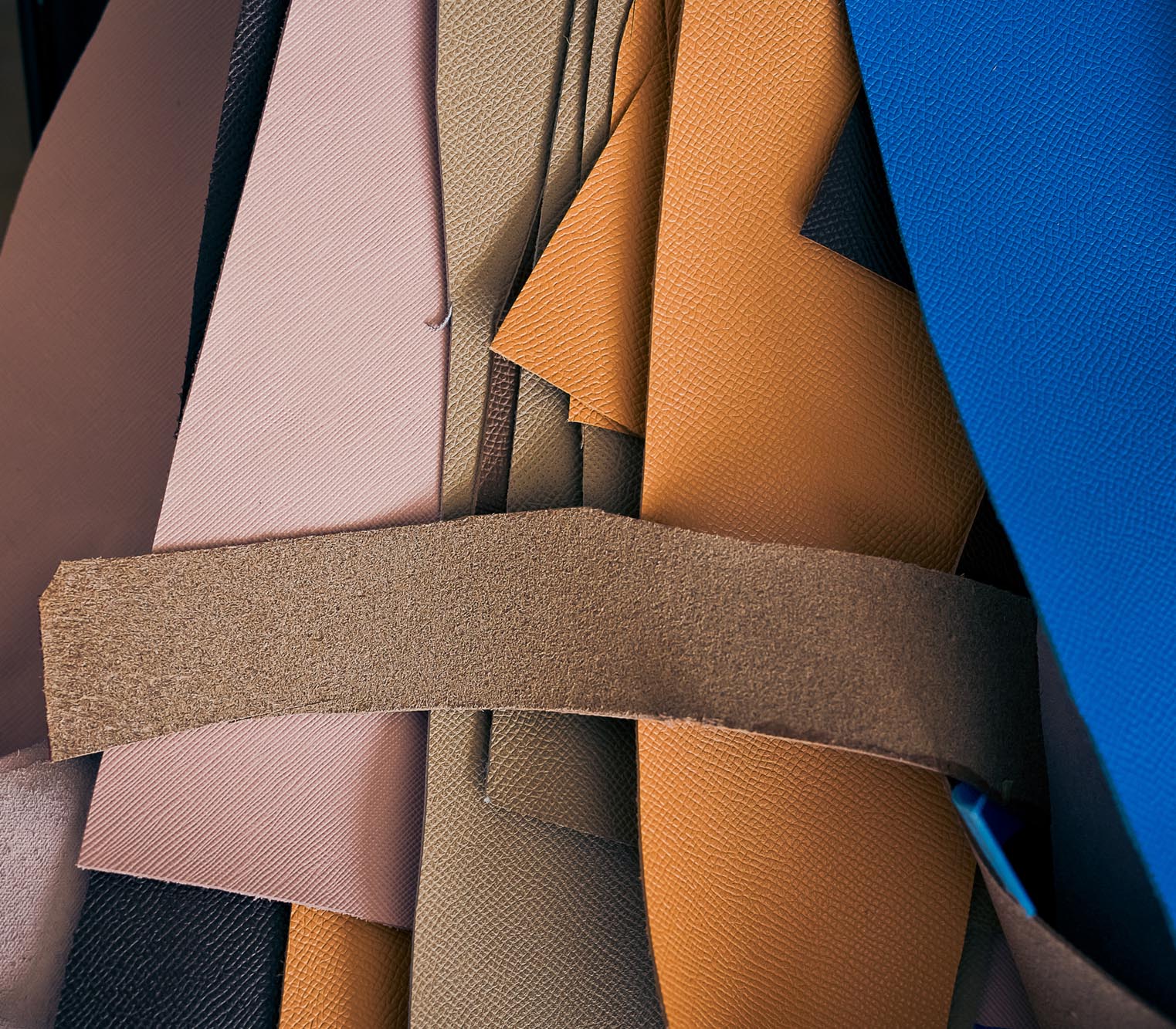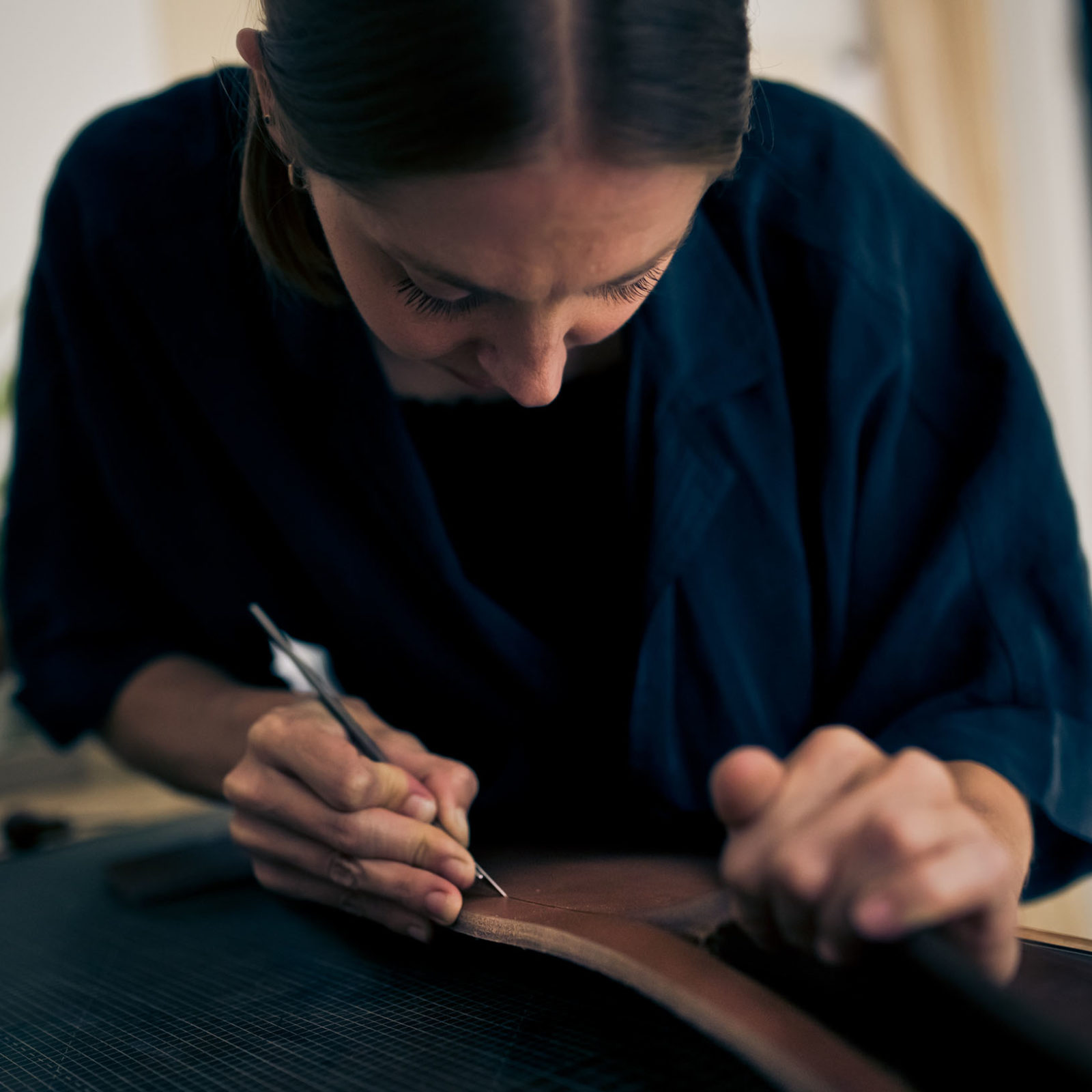
Learn About Leather
Our mission is to support a thriving and connected leather industry. Key to that is making sure students, our future designers, makers, and users of leather have access to trusted information and the opportunity to work with one of the most sustainable and versatile of materials.
In partnership with Leather Naturally, the resources on this page have been drawn together to help lecturers, tutors, and students, and can be downloaded for free.
If you want to help your students get locally produced leather you can read more about our Surplus Leather Project and if you work at a UK university or college please complete the form to be considered as a partner.
Do explore the page and linked articles etc below, and please make sure to take a look at the first and most crucial resource – the “Guide to Modern Leathermaking” presentation – an excellent walk through of leather as a material, the process by which it is made, an understanding of its properties and more:

Guide to Modern Leather Making
Hides come from animals raised for food, a by-product that would otherwise end up in landfill. This repurposing accounts for 99% of the world’s leather, which is used in the fashion, automotive, furniture, aerospace, footwear, orthopaedic, equine and other industries.
Where does leather come from?
Leather is made from the hides of animals raised for food. This accounts for 99% of the world’s leather. They are treated and finished to create a durable product suitable for a huge range of uses.
These animals are not raised or killed to make leather. The hides are a by-product of food production and a valuable global resource, and thanks to the skills and knowledge of tanners and manufacturers, they ensure that this versatile material does not end up in landfill.
The main sources are: Cattle – 69% Sheep – 13% Goat – 11% Pig – 6%. Current estimates put this at a saving of 7.3 million tonnes for cattle hides alone and around 10 million tonnes in total per year. That is a lot of potential waste being transformed into a usable material.
Read more
Is leather sustainable?
Yes. It converts waste from the food industry that would be otherwise thrown away, to make products we use in everyday life.
- Leather keeps around 10 million tonnes out of landfill a year
- Leather is long-lasting
- Leather products are repairable
- Leather can be recycled
- At its end-of-life phase, leather degrades through chemical and biological means
The leather industry creates employment and skills for millions worldwide, an important defining factor in sustainability and the circular economy.
Read more
The two main types of tanning
Vegetable tanned leather
Vegetable tanning is the oldest tanning method, it uses extracts from wood, and nuts of trees and shrubs. Responsible suppliers will ensure these are from a sustainable source. It usually takes longer to tan leather using this method, but the result is a leather with distinctive aesthetic and handle that ages beautifully.
Read moreChrome tanned leather
About 75% of leather made today is chrome tanned. The process uses trivalent chromium (Cr III), which is a safe substance that also represents an essential part of our diet with many people taking daily supplements that contain it.
Best practices of chrome tanning use half the chemicals required by other methods and produces effluent content below legal requirements. Chrome tanning produces consistent leathers that can be used or worn year after year without any loss of properties.
Read more

What is 'vegan leather'?
Vegan leather does not exist. It is a marketing term and any material that is not of animal origin can be labelled as ‘vegan’.
It is important to realise that the ‘vegan’ tag does not necessarily mean ‘natural’, ‘green’ or ‘sustainable’, nor does it necessarily provide the same wear and durability qualities as real leather.
Can leather be recycled?
Yes. Leather fibreboard is made by grinding up old leather and is used in shoes to create insoles and heel inserts and leather trimmings are used as stuffing for items such as punch bags. New composite materials are also being developed that incorporate ground up leather.
Increasingly companies developing ways of using the leather trimmings that result from production and businesses that repurpose leather products into something new, enabling them to be recycled and reused.
Learn more

Research
The benchmark study on leather alternatives, comparing material differences and performance testing.
Learn more
Surplus Leather
This project is dedicated to providing access to surplus leather, free of charge, through the generous donations of partner tanneries in the UK.
Learn more
Education partnerships
Learn more about our existing education partnerships with colleges and universities across the UK
Learn MoreThe Leathersellers presents: The Outsider Craft Podcast with Yusuf Osman
After years of making and teaching, Yusuf Osman, former lawyer, now artisan leatherworker and designer, finds himself at a creative and spiritual point of inflection. With the help of fellow artisans and creatives, Yusuf asks what it means to be a leather craftsperson in the modern day and if leathercraft can help us achieve the lives we want to live.
Packed with advice and inspiration for current or aspiring leather craftspeople.
Watch now
Leathersellers' Review
Our annual Review features stories about our leather grantees, the leather trade, and reports on our leather grant funding strategy.
Learn more
The Leather Industry
At the heart of the leather industry are the tanneries producing the material itself, of which we are aware of 23 currently in the UK (ranging from large technologically advanced companies to sole traders using traditional methods). Leather UK estimate almost 900 people are employed directly by these businesses.
Tanning, Designing, Making and Conserving
Many more people, organisations and businesses form the wider leather industry through use and development of skills in leather working for a broad range of products and purposes. The Leathersellers are keen to work with partners to ensure skills and knowledge are shared, key items preserved and talent and innovation celebrated.
Opportunities with Leather
Please see below for various opportunities available to people working, creating, and learning in the leather industry (and please contact us if you would like to share something here).